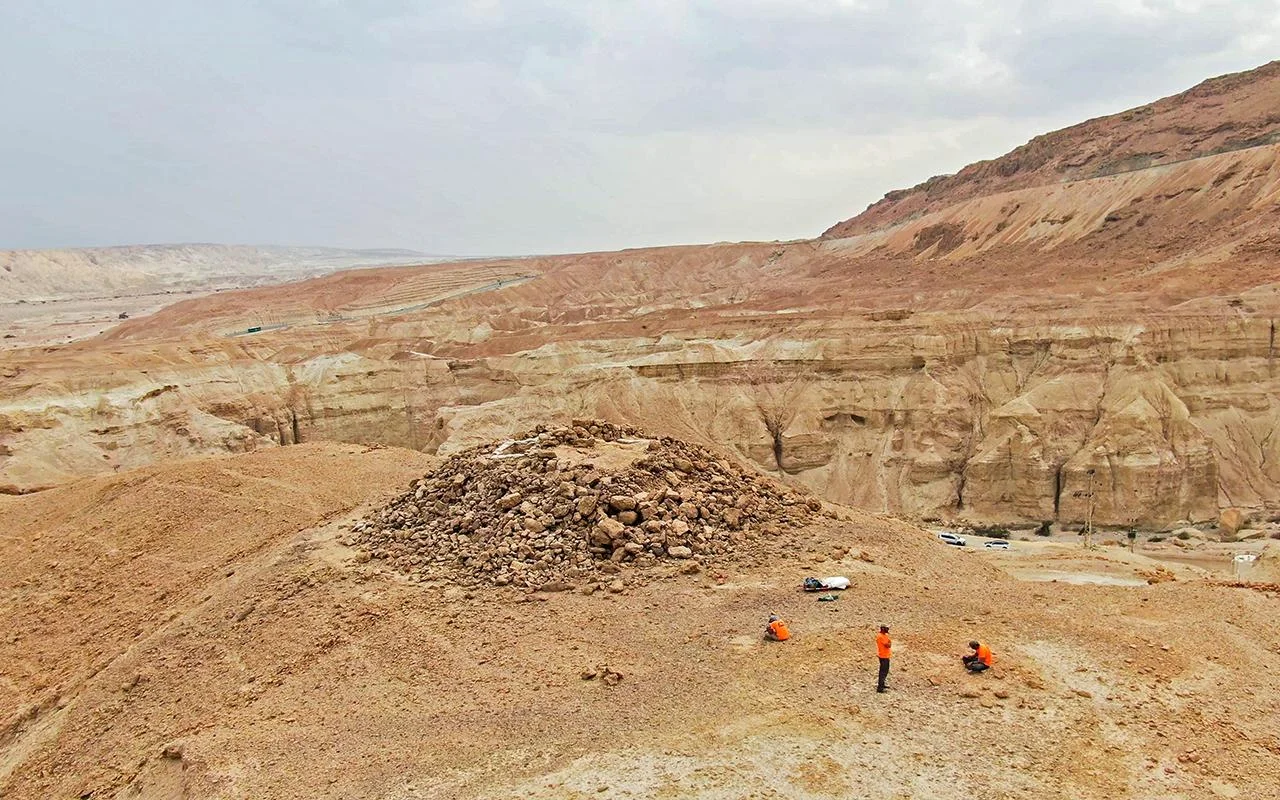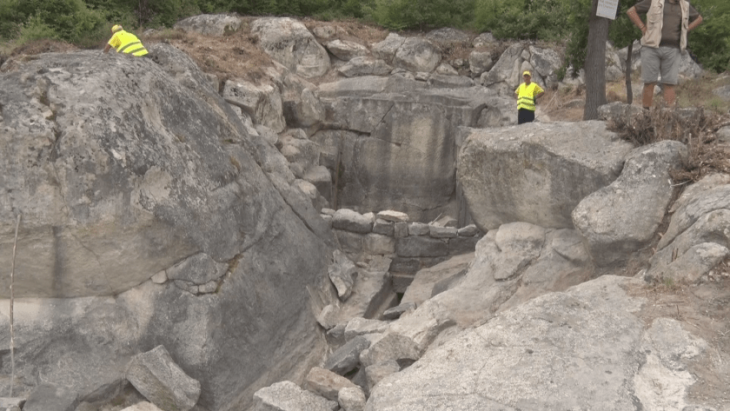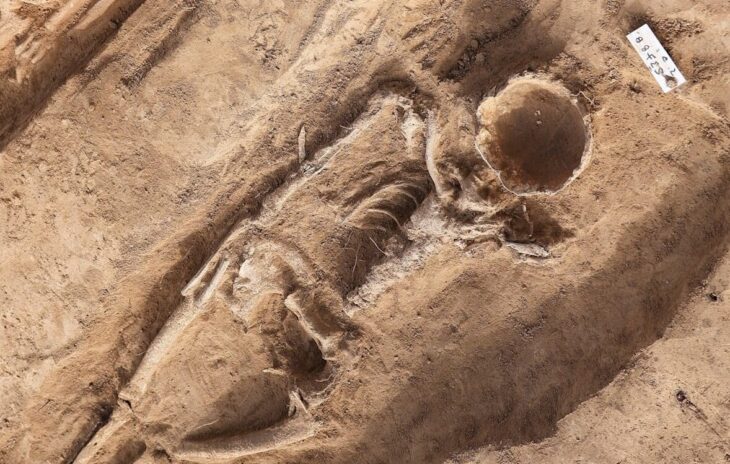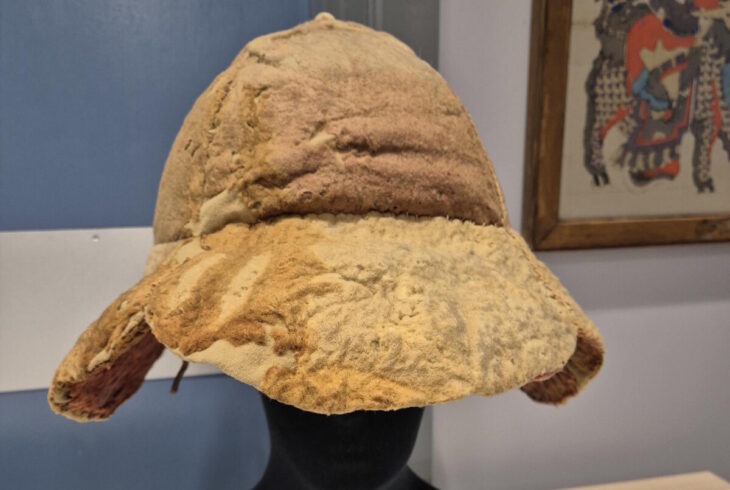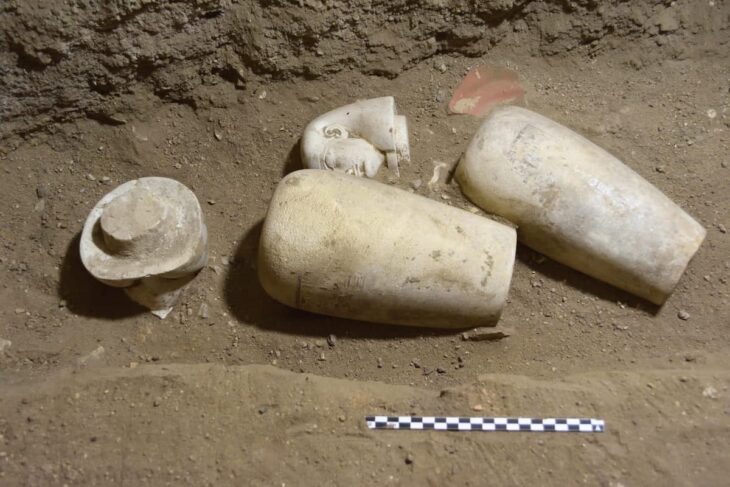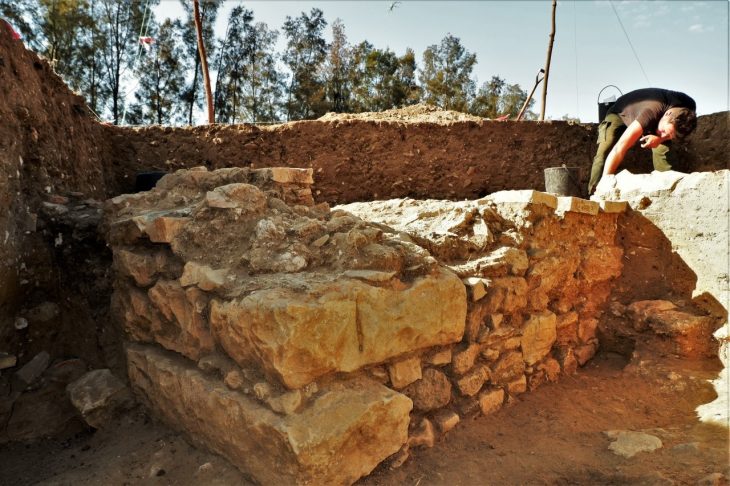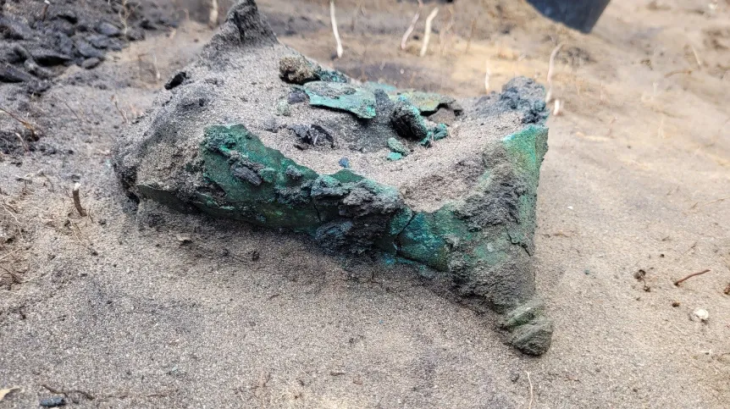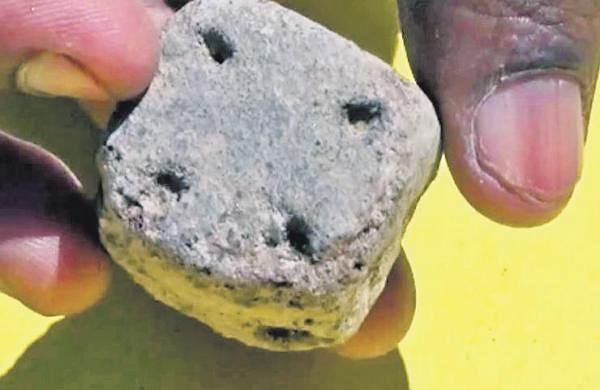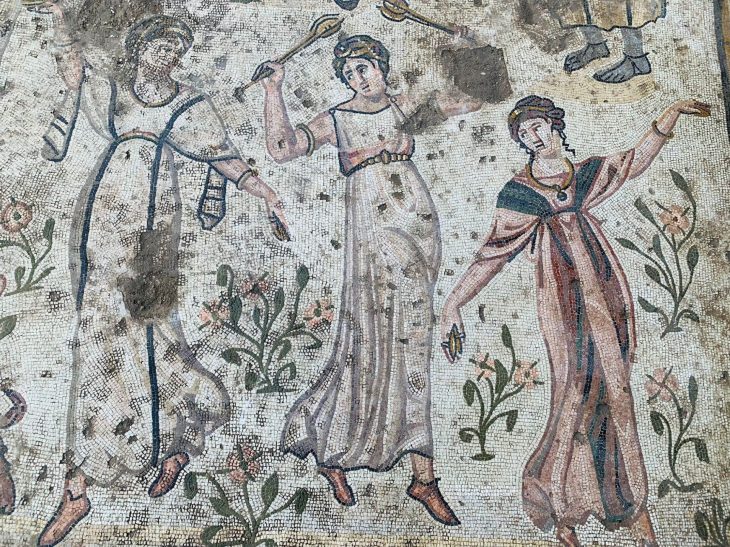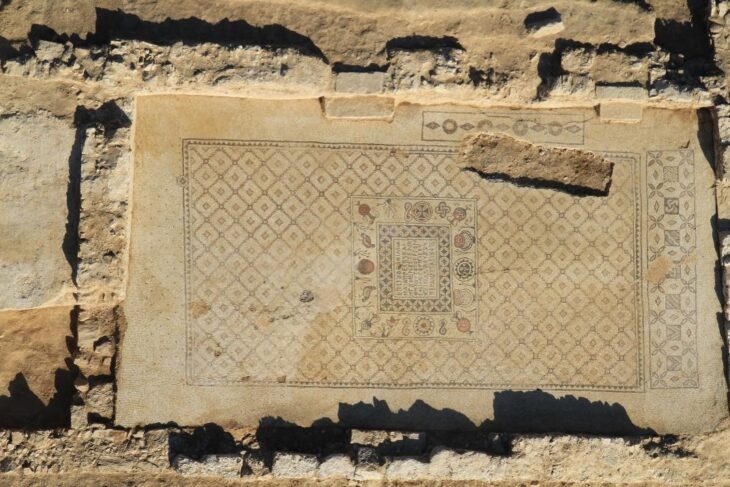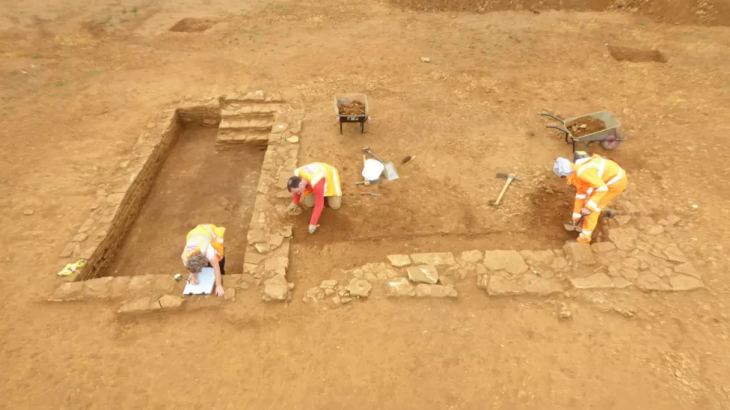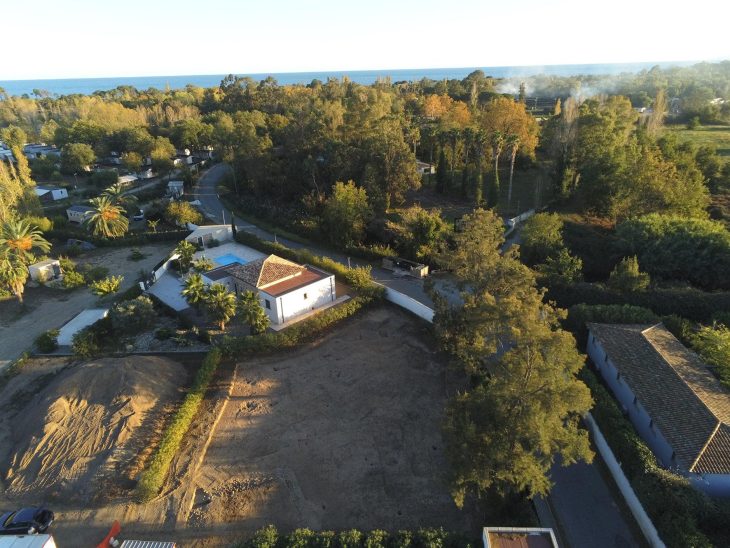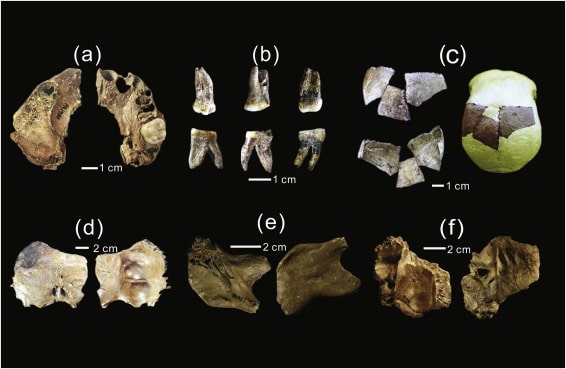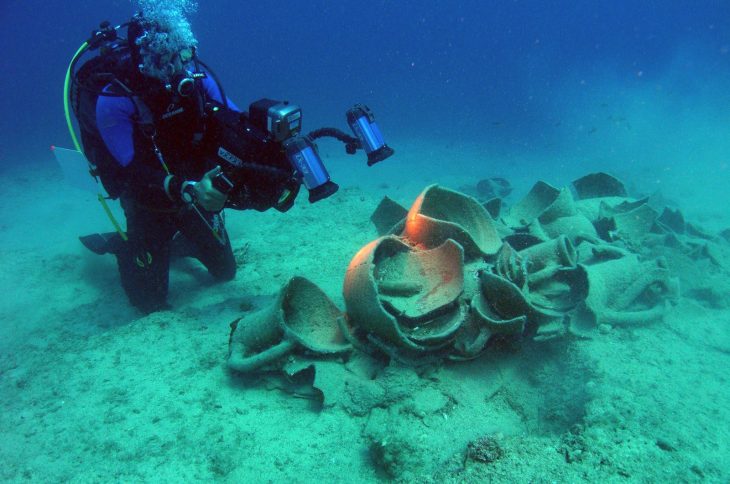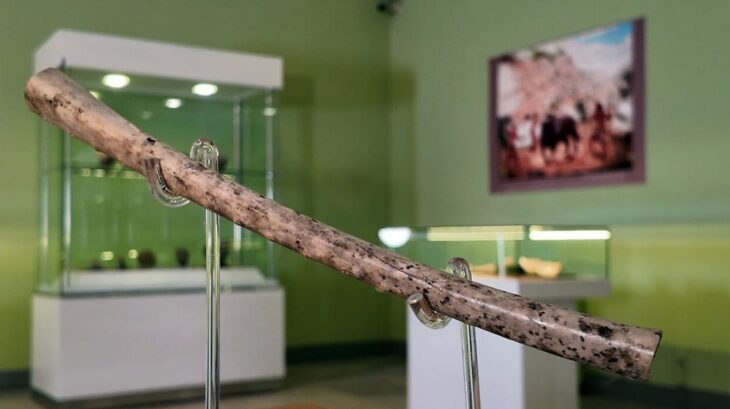In a remarkable archaeological breakthrough, Israeli archaeologists have uncovered a monumental pyramidal structure in the Judean Desert, dating back 2,200 years to the Hellenistic period.
This significant find, located near Nahal Zohar, approximately 20 kilometers south of Masada, is part of a broader initiative aimed at locating additional Dead Sea Scrolls and preserving the region’s rich historical heritage.
The Israel Antiquities Authority (IAA) announced that the structure, composed of massive hand-hewn stones, stands five to six meters high and has long been speculated to be a burial site. However, recent excavations have revealed a wealth of artifacts, including papyrus scrolls, bronze vessels, ancient furniture remnants, coins, and textiles, suggesting that the site may have originally functioned as a fortress guarding a vital trade route before being repurposed as a monumental tomb centuries later.
Dr. Eitan Klein, co-director of the excavation, explained, “Initially, we thought the site could be just a tomb, but as we uncovered more, we recognized the shape of the original walls, leading us to identify it as a tower or fortress from the Hellenistic period.” This era was marked by the rule of the Ptolemaic Kingdom, a Greek dynasty that controlled the region, and the structure likely served to protect the main road linking Edom (modern-day Jordan) to Gaza, possibly functioning as a tax collection point for Ptolemaic officials.
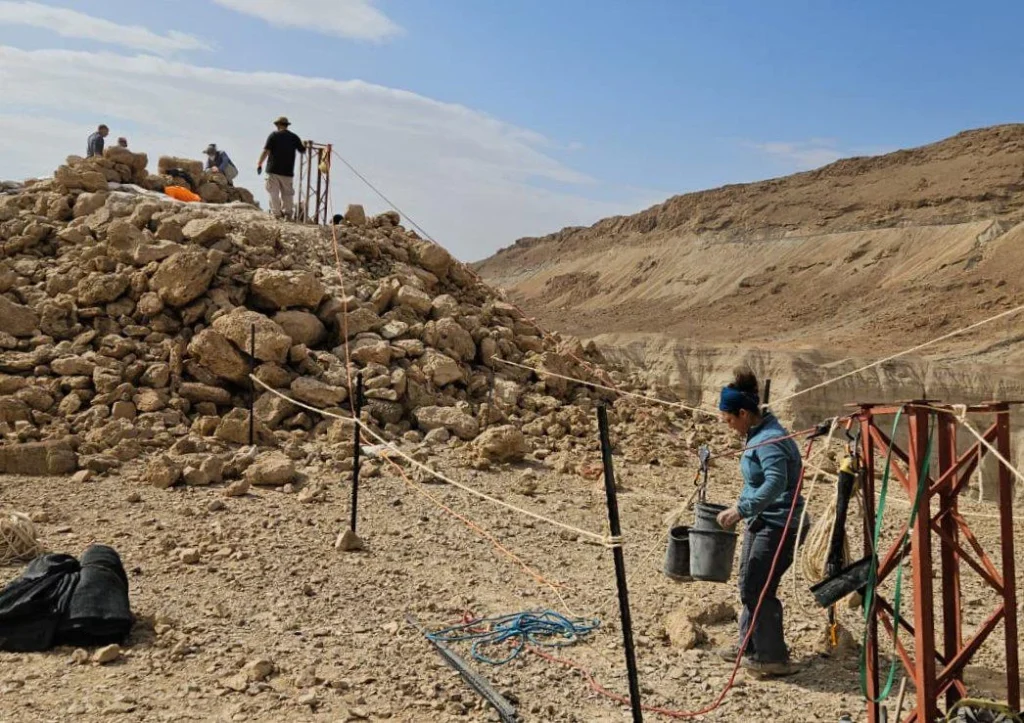
The excavation is part of a larger, multi-year project initiated eight years ago to survey and protect archaeological sites in the Judean Desert, which have been threatened by looting and unauthorized excavations. Funded by the Ministry of Heritage and the IAA, the project has already surveyed 180 kilometers of cliffs and identified around 900 caves, recovering thousands of artifacts, including well-preserved organic materials due to the desert’s arid climate.
📣 Our WhatsApp channel is now LIVE! Stay up-to-date with the latest news and updates, just click here to follow us on WhatsApp and never miss a thing!!
Among the notable discoveries are Greek inscriptions on papyrus, which may represent tax documents, and a significant number of coins from both the Ptolemaic and Seleucid periods. These findings provide crucial insights into the building’s dating and cultural context. Klein noted, “Finding written records from such a long time ago is very rare and the dream of every archaeologist.”
Despite the initial looting of the site, archaeologists have managed to recover a variety of organic and inorganic artifacts, including wooden tools and textiles. The presence of coins minted under Antiochus IV Epiphanes, a key figure in the Hanukkah story, indicates that the structure was in use during the 3rd and early 2nd centuries BCE. However, the reasons for its eventual abandonment remain unclear, with possibilities ranging from warfare to natural disasters.
As the excavation continues, researchers are eager to uncover more about the structure’s purpose—whether it served as a guard tower, a monumental grave, or something else entirely. The ongoing efforts not only aim to illuminate the history of this enigmatic site but also engage the public, with volunteers participating in the excavation process.
In conclusion, the discovery of this ancient pyramid-like structure in the Judean Desert represents a significant chapter in the region’s archaeological narrative. As excavations progress, the hope remains that further findings will shed light on the lives of those who inhabited this remote fortress and the historical events that shaped their world.
Israel Antiquities Authority (IAA)
Cover Image Credit: Emil Aladjem, Israel Antiquities Authority

